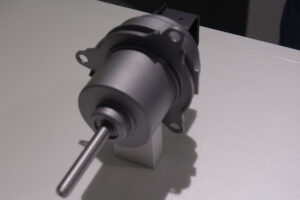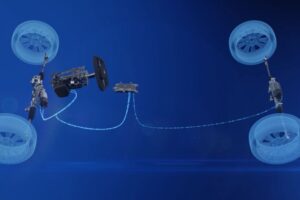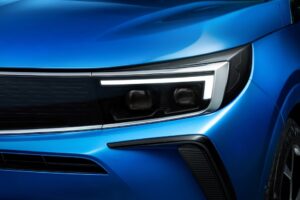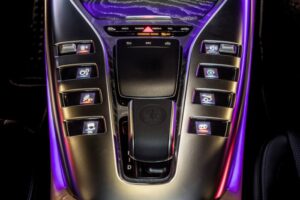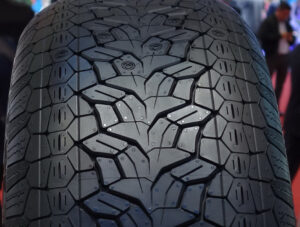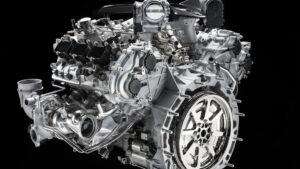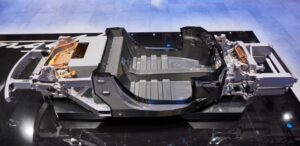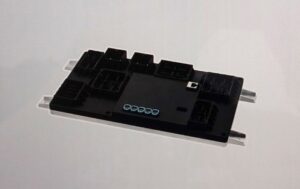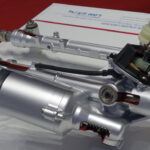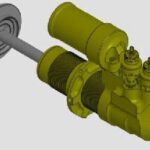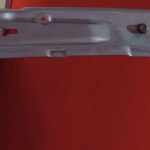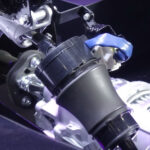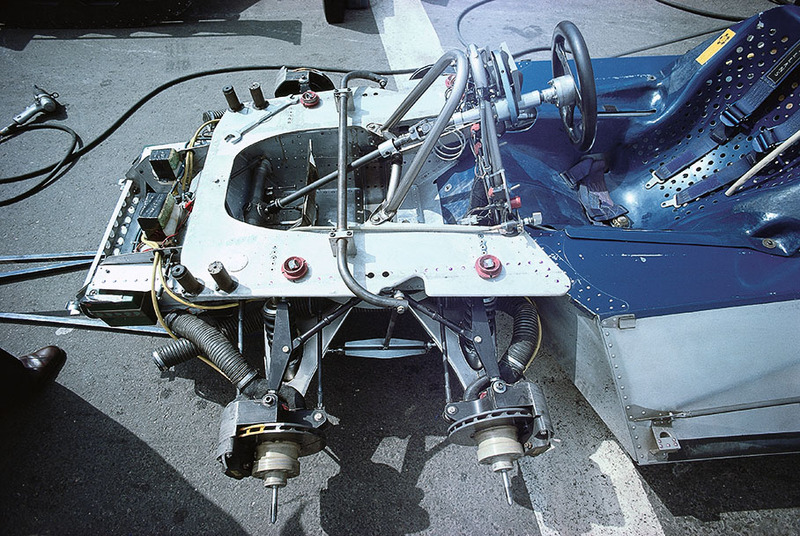
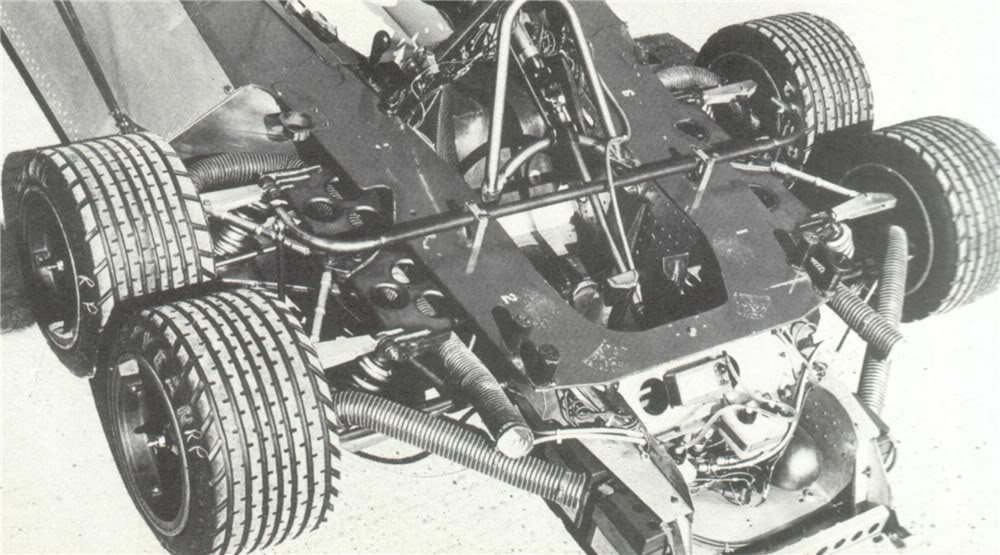
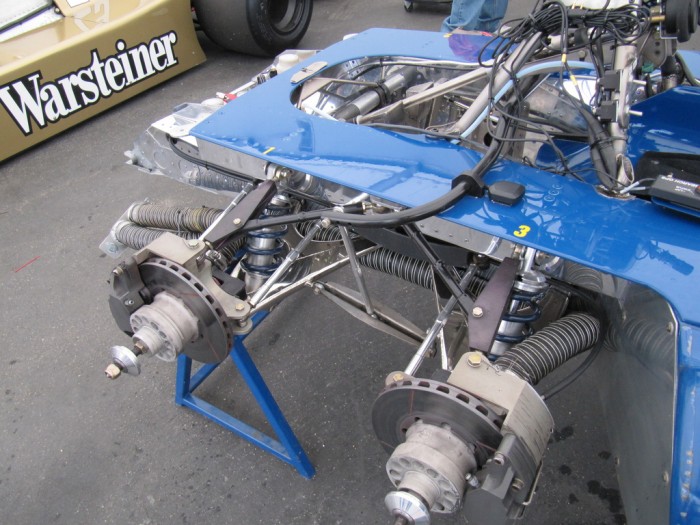

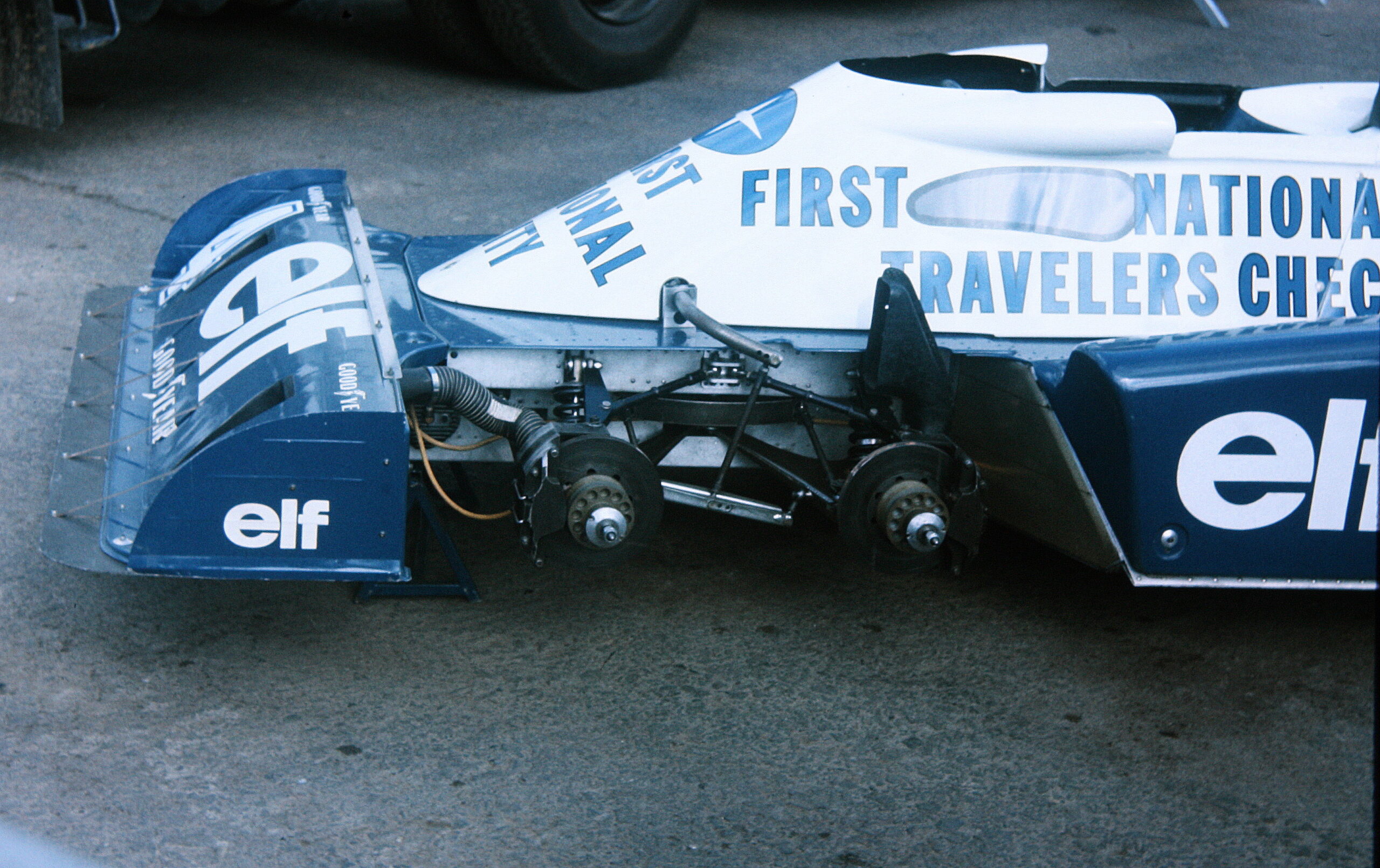
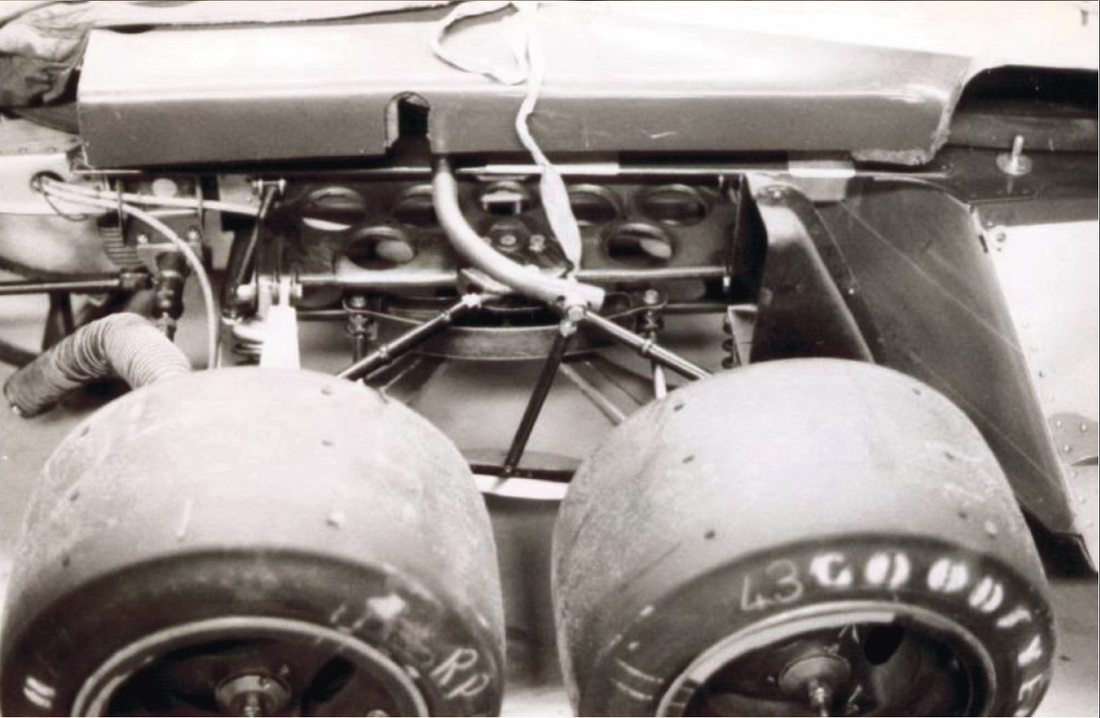
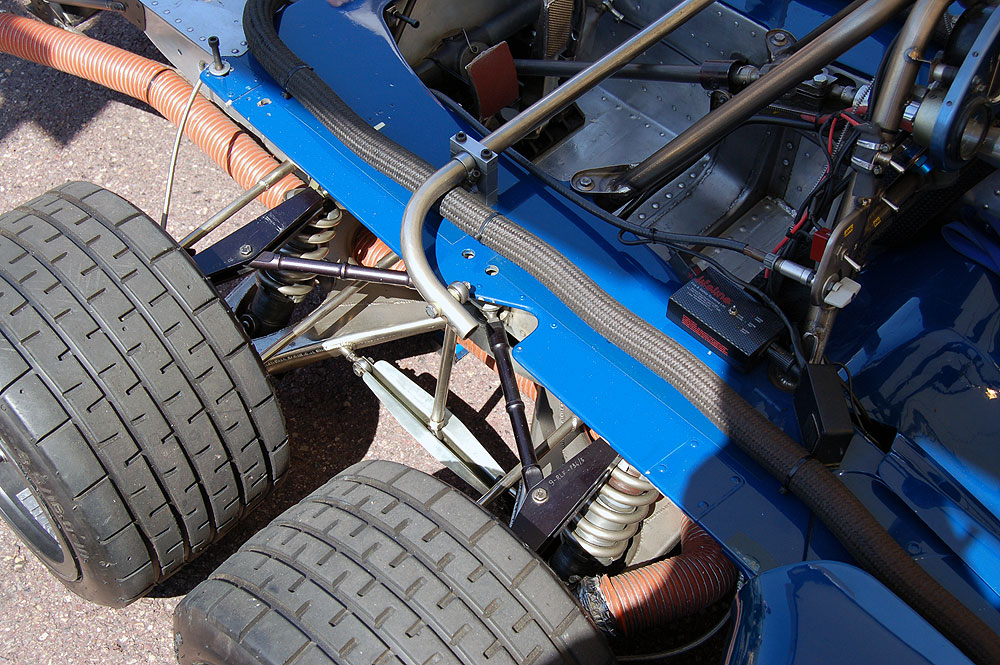
Each wheel had it’s own springing medium, but shared a common anti-roll bar.
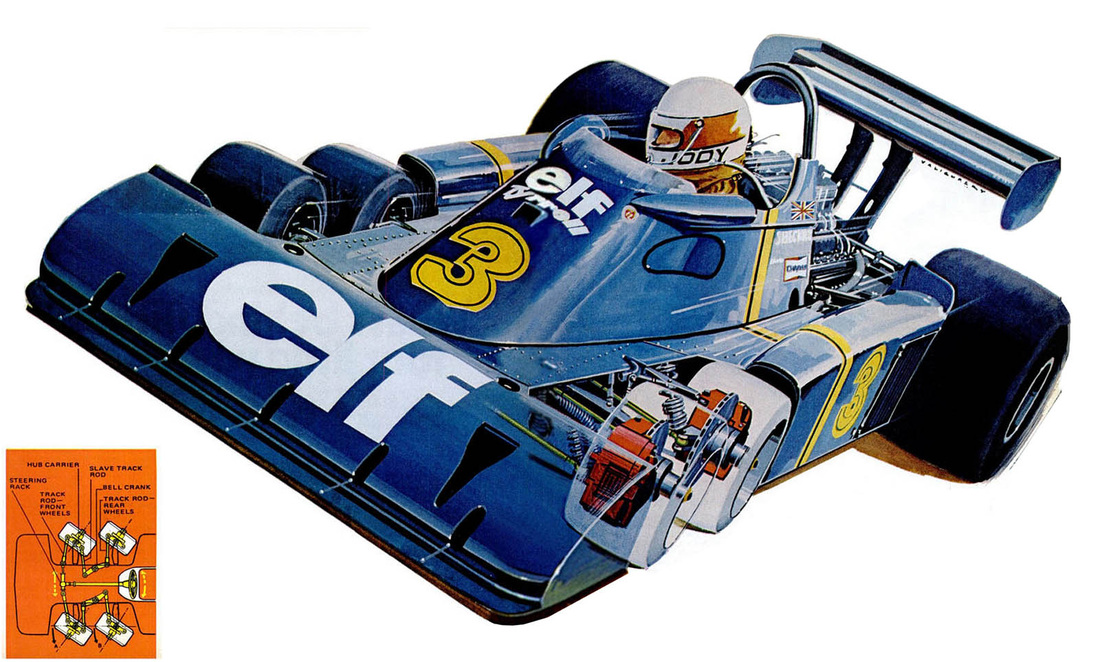
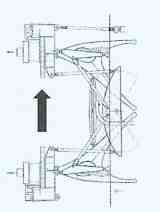
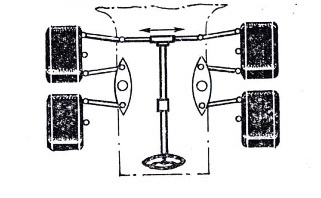
Including the bell-crank steering mechanism which operated both pairs of wheels from the single steering rack mounted on the front bulkhead.

A regular Formula One car behind the driver, but with a new front with double wheelpairs, where the front pair steered and the rear followed. The result was a car with 12 percent less wind resistance thanks to the small 10-inch front wheels. Four breaking front wheels would allow the drivers to break later than anyone else into curves and hairpins. More rubber on the asphalt would also bring better curve and breaking performance. In the rear they put on the biggest tyres available, mounted on 19 inch rims. The car was of course heavier, 590 kilos compared to the other cars 575.

